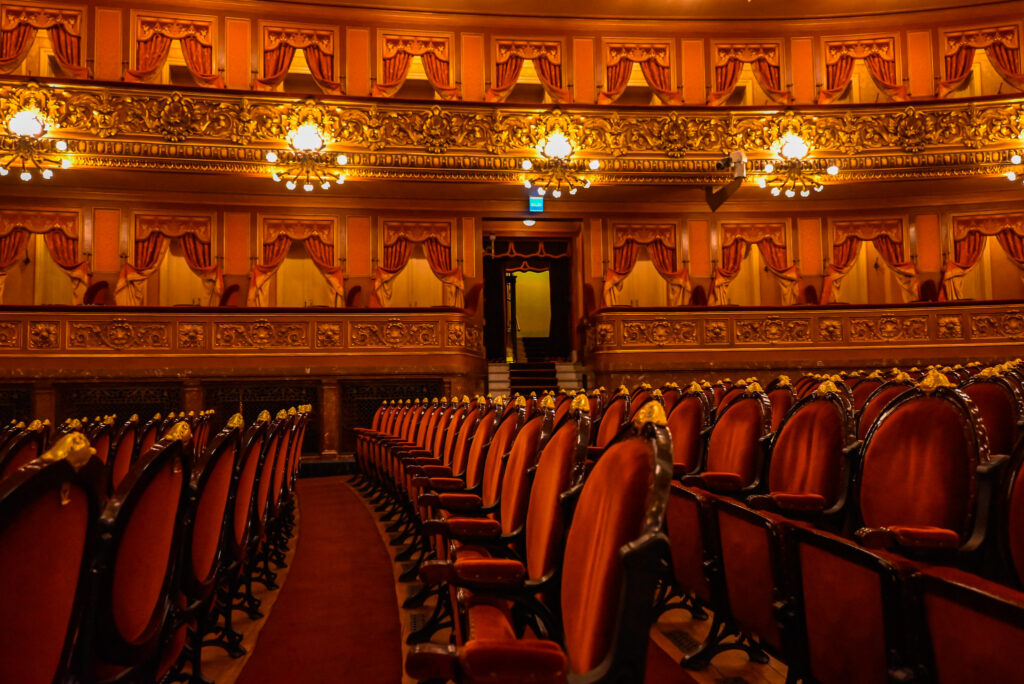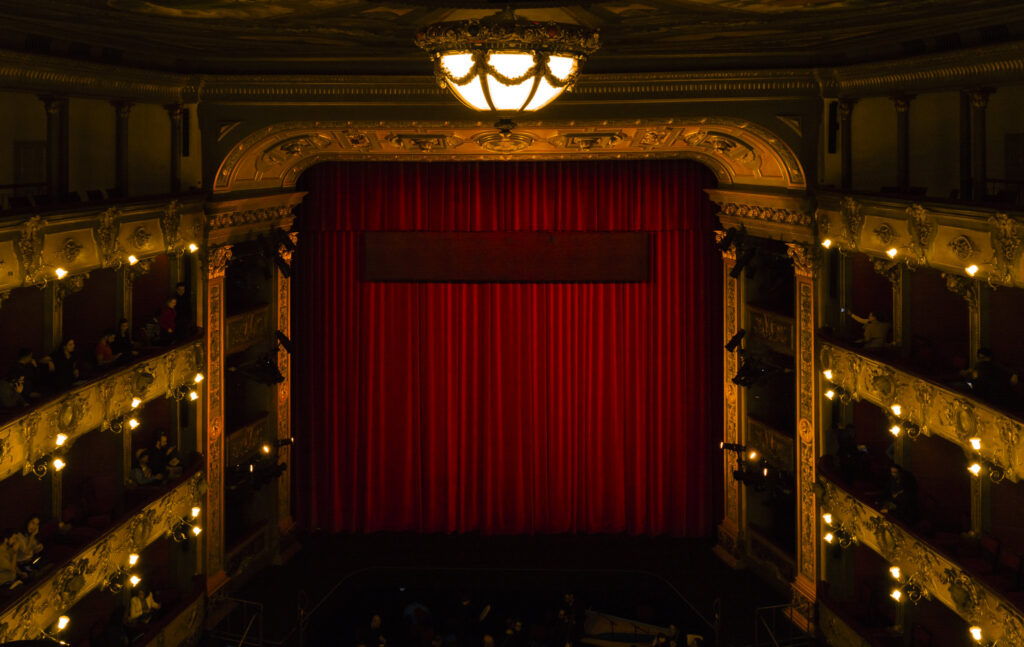Are you looking for an unforgettable cultural experience in Buenos Aires? Discover everything you should know before your visit to the Teatro Colón, one of the world’s most renowned opera houses.
This iconic venue offers a blend of history, architecture, and world-class performances that will leave you in awe. Whether you’re a digital nomad, a traveler, or an expat, ExpatPathways brings you the ultimate guide to making the most of your visit.
From guided tours and stunning photo opportunities to enjoying a live performance, we’ve got all the insider tips you need. Dive into the heart of Buenos Aires’ cultural scene with our comprehensive guide.
Teatro Colón: Everything You Should Know Before Your Visit
What is the Teatro Colón in Buenos Aires?
El Teatro Colón de Buenos Aires is one of the world’s most important opera houses. Its rich and prestigious history, along with its exceptional acoustic and architectural conditions, places it on par with theaters such as La Scala in Milan, the Paris Opera, the Vienna State Opera, Covent Garden in London, and the Metropolitan Opera in New York.
History and Development
- Early Years and Relocation (1857-1908): The Teatro Colón originally operated from 1857 to 1888 in its first location. It was closed for the construction of a new hall, which was inaugurated on May 25, 1908, with a performance of Aida.
- Formation of In-House Ensembles (1925-Present): Initially, the theater engaged foreign companies for its seasons. From 1925 onwards, it had its own stable bodies—Orchestra, Ballet, and Choir—and its own production workshops, allowing it to organize its own seasons financed by the city’s budget. This professionalism has defined the theater as a seasonal theater (stagione) capable of fully realizing productions.
Renowned Artists
Throughout its history, many significant artists have graced its stage. Notable names include:
- Singers: Enrico Caruso, Claudia Muzio, Maria Callas, Régine Crespin, Birgit Nilsson, Plácido Domingo, Luciano Pavarotti.
- Dancers: Vaslav Nijinski, Margot Fonteyn, Maia Plisetskaia, Rudolf Nureyev, Mikhail Baryshnikov.
- Conductors: Arturo Toscanini, Herbert von Karajan, Héctor Panizza, Ferdinand Leitner.
Architectural and Acoustic Excellence
- Construction and Design: The construction of the new building took around 20 years, with its cornerstone laid on May 25, 1890. The initial project was by architect Francesco Tamburini, continued by his partner Victor Meano after Tamburini’s death. Belgian architect Jules Dormal completed the project, adding his touch to the French-style decoration.
- Restoration and Modernization: In 2010, the theater exhibited a restored building in all its original splendor, enhancing its presentations with distinguished prestige. The restoration included a comprehensive master plan initiated in 2000 for the building’s value preservation and technological upgrades.
Artistic Contributions
- In-House Workshops: Since 1963, the theater has had workshops for decoration, props, and costume painting. From 1968 to 1972, under architect Mario Roberto Álvarez, an expansion added production sectors, scenic workshops, rehearsal rooms, administrative offices, and staff dining facilities.
- Continued Excellence: Today, the Colón is one of the few “Theater Factories” in the world, capable of producing all aspects of its performances thanks to its specialized stagecraft professionals.
Where is the Teatro Colón in Buenos Aires Located?
The Teatro Colón is located in the heart of Buenos Aires, the capital of Argentina.
- Address: Cerrito 628, San Nicolás, Buenos Aires.
Nearby Attractions and Amenities
- San Nicolás Neighborhood: This central neighborhood is home to iconic landmarks such as the Obelisco, the Teatro Colón, and Calle Corrientes.
- Dining Options: Being close to Avenida Corrientes, visitors can enjoy a delicious meal before or after their visit to the Teatro Colón at the numerous restaurants and bars in the area.
How to Get to the Teatro Colón
The Teatro Colón is located in a prime location in Buenos Aires, making it easily accessible from any part of the city.
By Bus
Several bus lines pass near the Teatro Colón, including lines 24, 29, 45, 59, 75, 100, 140, and 146. The theater’s proximity to major city avenues makes bus travel a convenient option.
By Subway
The theater is also easily accessible via the subway. Both Line B and Line D will drop you off a few blocks from the Teatro Colón. Line C, which runs north-south, also gets you close to the theater, although Lines B and D run east-west and might be more convenient depending on your starting point.
By Train
The Mitre, Roca, and San Martín railway lines can get you close to the Teatro Colón. However, you may need to walk several blocks or combine with another mode of transportation from the nearest stations.
Remember that you will need the SUBE card to travel by public transport
By Taxi or Rideshare
Taxis and rideshare apps are also valid options to reach the Teatro Colón. Since most live performances take place at night, the streets surrounding the theater are less congested than they are in the afternoon or midday.
By Bicycle
Consider using a bicycle, either rented from a private agency or from the public bicycle system of Buenos Aires (Ecobici).
Why is it Important to Visit It?
The Teatro Colón is a historic opera house in Buenos Aires, Argentina, considered one of the top ten opera houses in the world by National Geographic.
Notable Performers
The theater has hosted an extensive list of renowned singers, including:
- Tenors: Enrico Caruso, Beniamino Gigli, Lauritz Melchior, Mario del Monaco, Richard Tucker, Wolfgang Windgassen, Alfredo Kraus, Plácido Domingo, José Carreras, Luciano Pavarotti.
- Sopranos: Claudia Muzio, Lily Pons, Maria Callas, Renata Tebaldi, Kirsten Flagstad, Victoria de los Ángeles, Joan Sutherland, Birgit Nilsson, Montserrat Caballé, Eva Marton, Kiri Te Kanawa, Katia Ricciarelli, Mirella Freni, June Anderson, Renée Fleming.
- Mezzosopranos: Fedora Barbieri, Marilyn Horne, Teresa Berganza, Christa Ludwig, Régine Crespin, Frederica von Stade, Waltraud Meier, Cecilia Bartoli.
- Baritones: Titta Ruffo, Leonard Warren, Hans Hotter, Cornell MacNeil, Hermann Prey, Sherrill Milnes, José van Dam, Dmitri Hvorostovsky.
- Basses: Fiodor Chaliapin, Borís Christoff, Ferruccio Furlanetto, Samuel Ramey.
Notable dancers who have performed at the Teatro Colón include Anna Pavlova, Vaslav Nijinsky, Rudolf Nureyev, Alicia Alonso, Maia Plissetskaya, Margot Fonteyn, Mikhail Baryshnikov, Vladimir Vassiliev, Antonio Gades, and prominent Argentine dancers such as María Ruanova, Olga Ferri, Michel Borovsky, José Neglia, Norma Fontenla, Wasil Tupin, Esmeralda Agloglia, Jorge Donn, Julio Bocca, Maximiliano Guerra, and Paloma Herrera.

Prestigious Productions
The Teatro Colón has also hosted prestigious régisseurs and scenographers, and performances by the world’s leading orchestras, such as the Vienna Philharmonic, the Philadelphia Symphony, the New York Symphony, the Berlin Philharmonic, and the London Philharmonia.
Instrumental soloists who have performed here include Martha Argerich, Alfred Brendel, Paco De Lucía, Antonio De Raco, Nelson Freire, Bruno Gelber, Friedrich Gulda, Gidon Kremer, Alberto Lysy, David Oistrakh, Manuel Rego, Narciso Yepes, Itzhak Perlman, Midori, Yo-Yo Ma, Pinchas Zukerman, Mstislav Rostropovich, Ralph Votapek, and Misha Maiski, among many others.
Architectural Significance
The main hall, in the shape of a horseshoe, meets the most stringent standards of Italian and French classical theater. It is surrounded by boxes up to the third floor, with a horseshoe shape that has a minor diameter of 29.25 meters, a major diameter of 32.65 meters, and a height of 28 meters.
It has a total capacity of 2,478 seats, but around 500 people can also stand to watch performances. The dome, which measures 318 square meters, originally had paintings by Marcel Jambon, which deteriorated in the 1930s. In the 1960s, Argentine painter Raúl Soldi was commissioned to repaint the dome, which he inaugurated in 1966.
The stage has a three-centimeter per meter incline and measures 35.25 meters wide by 34.50 meters deep, with a height of 48 meters. It features a 20.30-meter diameter revolving disk that can be electrically operated to rotate in any direction and quickly change scenes.
In 1988, modernization work was carried out on the stage machinery to facilitate the handling of sets and speed up scene changes.
The orchestra pit can accommodate 120 musicians and is treated with special sound reflection chambers and curves.
These conditions, along with the architectural proportions of the hall and the quality of the materials, contribute to the Teatro Colón’s exceptional acoustics, recognized worldwide as among the most perfect.
Cultural Importance
Due to its size, acoustics, and history, the Teatro Colón is considered one of the best opera houses in the world. According to an acoustic expert survey by Leo Beranek among prominent international opera and orchestra conductors, the Teatro Colón has the best opera acoustics and the second-best concert acoustics in the world.
The theater is a must-visit for music lovers, comparable to the most important lyric theaters globally, such as La Scala in Milan, the Metropolitan Opera House in New York, the Vienna State Opera, Covent Garden in London, and the Paris Opera. It has always been revered by both the public and the most renowned artists.
The Teatro Colón is home to the Buenos Aires Philharmonic Orchestra, the Teatro Colón’s stable orchestra, choir, and ballet. It also houses the Centro de Experimentación del Teatro Colón, the Instituto Superior de Arte, with its Orchestral Academy, Children’s Choir, and the Colón Contemporáneo program.
As a seasonal theater, it renews its programming annually and is a self-producing theater with specialized workshops to create all the necessary elements for an opera or ballet performance. The Teatro Colón is the most important emblem of art and culture in Buenos Aires and Argentina. For all Argentines, the Teatro Colón is like an ambassador to the world.
Simply admiring the Teatro Colón’s architecture is an activity that will captivate you with its dimensions, beauty, and historical value. In addition to being praised as one of the best theaters in the world, exploring its halls and immersing yourself in the majestic main hall will be like traveling back to Argentina’s golden age.
Activities at the Teatro Colón in Buenos Aires
Guided Visit
The Teatro Colón offers guided tours throughout the building, allowing visitors to explore from the boxes and main hall to the workshops and areas where theater productions are created.
This option is highly recommended for first-time visitors. Given its vast dimensions and grandeur, having a specialized guide to narrate the history and highlight key areas is essential.

Take Pictures
Taking photographs at the Teatro Colón is an instinctive activity for capturing the essence of this historic and artistic site. The theater provides picturesque opportunities for photos and videos in the main hall, the boxes, and the building’s façade.
Be sure to tag the Teatro Colón in your social media posts to inspire other travelers to explore this magnificent place.
Enjoy a Live Performance
The acoustics of the Teatro Colón are highly praised by musicians, artists, and directors alike. Experiencing a live performance in this theater is a memorable experience, regardless of whether you are a fan of classical music and opera.
Watching a live show at the Teatro Colón, whichever performance you choose or can see, will leave you speechless. While not all seating locations offer an incredible view, ticket prices are relatively affordable, and performances are available almost every week.
Last Considerations
Visiting the Teatro Colón is an unmissable experience for digital nomads, travelers, and expats alike. This iconic opera house offers a wide range of performances, from musicals and symphonies to orchestras, operas, and ballet.
Always check the Teatro Colón’s schedule, as many shows are announced in advance. Ticket prices increase with better views and sound quality, ensuring a spectacular experience no matter where you sit.
To get your tickets, present your ticket obtained from the box office or download your e-ticket from https://entradasba.buenosaires.gob.ar/.
Follow the steps provided by ExpatPathways to access your tickets and make the most of your visit to Buenos Aires. Immerse yourself in the grandeur and cultural richness of the Teatro Colón.
(Featured Image Source: Patricia 🐑🐑/flickr.com)


